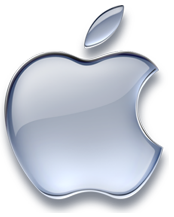With the above in mind, I have expanded the Watch List to encompass even more companies. My reasoning is that the more companies I monitor the greater the likelihood is that a buying opportunity will surface. A larger Watch List also increases the opportunity for me to diversify my portfolio and the passive dividend income. Expanding the Watch List means more work, but I'm convinced that it will pay off. The observant reader may already have noticed that I have added the following companies to my Watch List:
Hufvudstaden is a Swedish real estate company that acquires and manages office and retail properties in central Stockholm and Gothenburg (Swedens two bigest cities). The property portfolio consists of 30 properties, but in very attractive locations. The rental vacancy rate is low and the region of Stockholm accounts for the majority of the earnings. Profit and sales growth has been stable over time and the company is very conservatively financed with an equity ratio of almost 60% and an interest coverage ratio around 7. Hufvudstaden has raised the dividend 19 years in a row and the dividend has been increased on average by almost 8% a year since 2006. The company is together with Castellum my favorite picks in the Swedish real state business, but unfortunately, the market valuation is high right now,
Aflac sells additional insurance coverage in the United States and Japan. In total, the company has over 50 million customers worldwide. Approximately three quarters of the company's revenue comes from Japan, while the remaining part comes from Aflac's US operations. The company is focused on providing additional coverage to people who are already insured through their employer. Aflac has raised its dividends 31 years in a row and is at the moment traded at a P/E-ratio around 9. The low valuation has primarily to do with the strong dependence of the Japanese economy and exposure to European debt. The yield is on the low side at 2.5%, but a payout ratio of approximately 24% leaves rom for future dividend increases. The dividend has increased by 20% on average per year over the past decade, which is impressive.
Bahnhof is an Internet Service Provider that sells data and broadband services to individuals and businesses manly in Sweden, but also in Europe. The company offers services like hosting, broadband and IP telephony. Bahnhof also provides services that provide anonymity on the internet, something that the company believes strongly in. One of Bahnhof's strengths is their good reputation among customers, which means that the company doesn't need to spend much on marketing at the moment. Bahnhof has had a really nice revenue and profit growth since the company went public. The dividend has increased by an average of 50% per annum and profits by 30% since 2007!
Gjensidige is Norway's largest or second largest (depending who you ask) insurance company with operations in Scandinavia, Europe and the Baltics. Gjensidige has shown a healthy earnings growth rate the last couple of years. During the period costs have been kept down and the proportion of profitable customers has increased, which has contributed to the profit growth. The dividend has increased by a total of 31% since the company started distributing in 2010. The P/E-ratio is 16 at the moment, the dividend yield approximately 4.2% and the payout ratio 70% based on the past 12 months earnings. Gjensidige has a large exposure directly and indirectly to the Norwegian housing market, something one should be aware as a potential investor.
My plan is to return to the companies mentioned above in future posts. For those of you who want to see the valuation metrics as well as my assessment of fair price regarding the companies above feel free to visit my Watch List in the main menu of the blog.
Have a nice day!


















